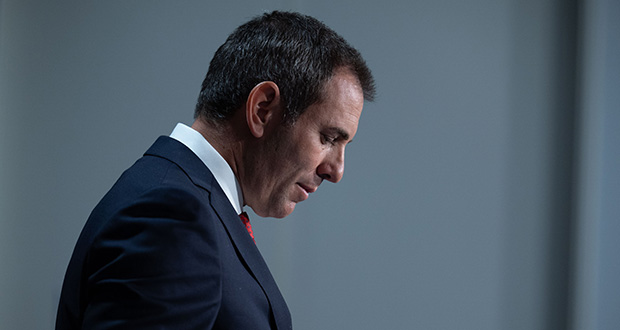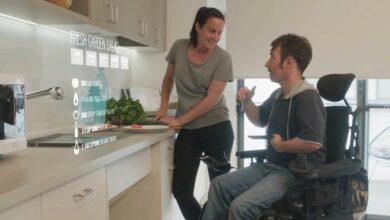Enough of reforming aged care… modern elders want something different: opinion

Businesses become "dead horses" when customers would rather die than buy.
When they struggle to be viable and sustain quality and safety, the workforce prefers elsewhere, and there's a growing sense that you could be heading for a human-rights disaster.
For businesses, this signals the spiral of diminishing returns from continuous improvement, and without a complete rethink, they go broke.
Sounds a bit like aged care?
You bet. Only aged care doesn't go broke because the government bails them out.
Sustaining the aged care it knows over a better one it can't imagine.
So, we follow the money and discover that if aged care's not going broke, treasury is.
It sees the $52bn aged care costs in ten years and worries that the quite reasonable case for an aged care NDIS will make finances even worse and that the mammoth aged care reforms will keep increasing costs but not much else.
But the treasury's unhappiness has so far only produced the 2021 Intergenerational Report – Leaving us in no doubt that we need a rethink, even if they haven't worked it out.
Mike Woods (ex-productivity commissioner and UTS professor of health economics) and Stephen Duckett (ex-deputy health CE and ex-Gratton Institute aged care expert) agree.
Woods agrees because it's the only way to make aged care affordable, and Duckett says it's the only way to make it work.
With treasury showing no sign of driving a rethink, we wondered if businesses in any other sectors had ever achieved "dead horse status" and done their rethink.
It turns out corporate history is a graveyard of the ones who haven't.
It seems no one ever disrupts themselves.
It's the disruptive innovators outside the sector who do it. They're amazed at the unaddressed pain points on the customer journey and excited by new possibilities, especially through technology.
They start imagining what "good" looks like.
The good news is there are plenty of disruptors in aged care.
In fact, Ageing 2.0 has exposed significant global growth in aged care start-ups and innovators.
It brings products and services to market that resolve customer pain points using new technologies, which Richard Caro (Tech-enhanced Life) told us modern elders love.
So, you'd think disrupting the aged care dead horse would be a laydown messier, but no one's buying.
Vulnerable older people only buy what providers tell them to.
Providers only buy what the government pays and inspects for.
And the disruptors aren't about to enter the complex world of becoming approved providers.
So, we need the government to change what it pays providers to do.
But John Spoehr from the Australian Industrial Transformation Institute) says that history shows we need more than changed government procuring practices to change provider practices.
He says we should assume a low awareness by providers of the opportunities for change.
Those providers must experience what "good" looks like, and services need to be co-designed with modern elders.
Those networks should be set up for learning, innovation, prototyping and barrier removal.
And an industry 4.0 digital strategy needs to be available and integrated, which means a significant up-front "investment" from the government.
All these changes should start with the government internalising the business case and leading a conversation about the value of rethink.
Then, building Spoehr's networks and capacities and procuring for co-design and innovation as core to providing services.
And putting a "price" on the things modern elders don't want that providers are in love with.
This is a fundamental transformation of the aged care sector to one that iteratively learns about living well as a frail modern elder.
It's about how modern elders and communities can be in the driver's seat on this journey.
It's about inventing and coordinating way more than a "package" from a single provider to get them there.
Spoehr says we need to bring this all together simultaneously to land transformation and that government needs to build a "transformation ecosystem".
ROSA (Registry of Older Australians) agrees and says it collects big national data on the health spending patterns of ACATed Australians.
So, by uniquely combining real-time co-design with digital 4.0 capacity, we know how frail older people prioritise their spending.
Gold for transforming businesses, but not for aged care providers.
Aged care boards can help here by prodding providers towards transformation.
The problem is that the governance mindset used to run an aged care organisation is not the one needed to transform it.
KPMG's Governance Series questions how boards shift to a transforming mindset without taking their eyes off the day-to-day business.
It says they must first learn how to govern to transform a business.
And then how to do both at the same time, which might also help their struggling day-to-day businesses.
So, aged care directors, here's a question for your CEO at your next board meeting: If you organised a board study tour of places where frail older people are supported to live exceptionally well, where would you take us?
You get the idea. It would help if you started your organisation's transformation by knowing what "good" looks like, and you won't learn that in the boardroom.
And the government needs to learn how to lead this transformation.
You could start by looking at the way you're keeping the nation's lights on while transforming where the energy comes from.
Can we have some of this, please?
Email: [email protected]





